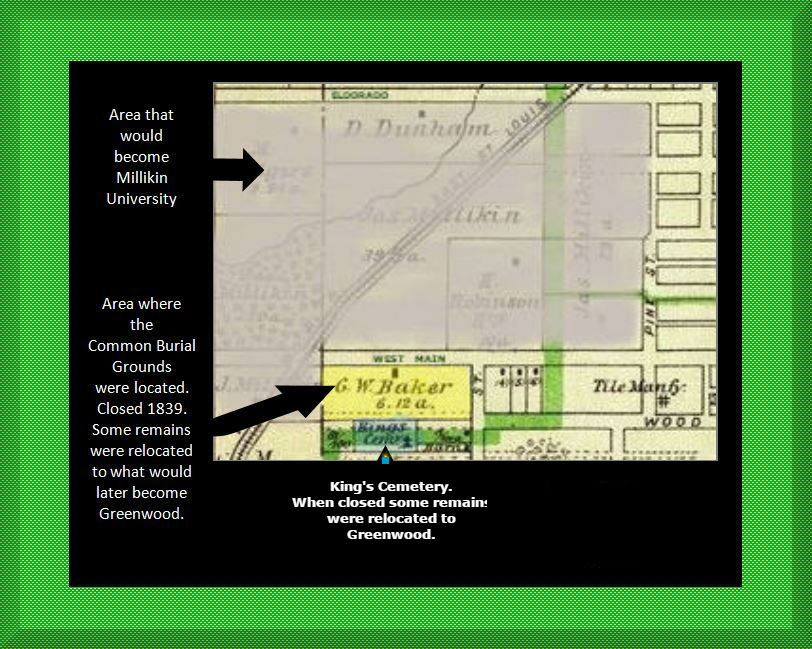
COMMON BURIAL GROUND
DEFUNCT
LOT : ?
REMOVED
1858
TO:

BLOCK 1
LOT : 44
ROW : 2
COLUMN : 9
SUB. R/C : ?
GRAVE # ?

|
Amos Benton Robinson Jr.
b. September 25, 1767
Lebanon, New London County, Connecticut
d. December 25, 1835
Decatur, Macon County, Illinois
buried: December 1835

|

FATHER
Amos Benton Robinson Sr.
(1734-1812)

MOTHER
Deborah Hyde
(1734-1780)

MARRIED
Levina Bullock
(1773-1805)
June 26, 1797
New Hampshire
Elizabeth "Betsey" Hughes
(1784-1868)
September 28, 1806
Norwich, Windsor County, Vermont
|

CHILDREN
with Levina
Amos Benton Robinson III
(1797-1883)
Hiram Robinson
(1799-1800)
Infant Daughter Robinson
(1800-1800)
Moses Robinson
(1800-1803)
Cephas Robinson
(1802-1803)
|
Caroline (nee-Robinson) Colton
(1803-1885)
Joel Robinson
(1803-1822)
George Robinson
(1804-1822)
Allen Robinson
(1805-1881)
Joseph Robinson
(1805-1881)
|
with Betsey
|
|

Amos Benton Robinson Jr. owned land in and outside the city limits of a very new Decatur, Illinois. Some of the land he sold to Edward Keys in June 1835 but Edward later forfeited on the deal and it fell back into the hands of the Robinson family since Amos had passed away. They retained ownership until James Millikin finally purchased it. This land long West Eldorado and West Main Streets is now home to Millikin University.
Other land that Amos owned and lived at was around the 1000 block of West Wood Street, which was at the edge of the city limits. Amos planted a large apple orchard there. When Amos passed away in December of 1835 he was buried at the edge of the apple orchard. At some point prior part of that land had become the Common Burial Grounds - perhaps Decatur's first cemetery. It closed in 1839. In 1865 land owned by the family of John E. King became the King's Cemetery. This land was right across the street from the former Common Burial Grounds. This land had previously been part of Amos Robinsons' apple orchard. Around 1885 this cemetery was closed. When both cemeteries were closed the city made attempts to remove and relocate as many bodies to Greenwood cemetery. Some were missed since graves were not marked very well back in those days.
|
|
|
|
|
|
|